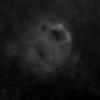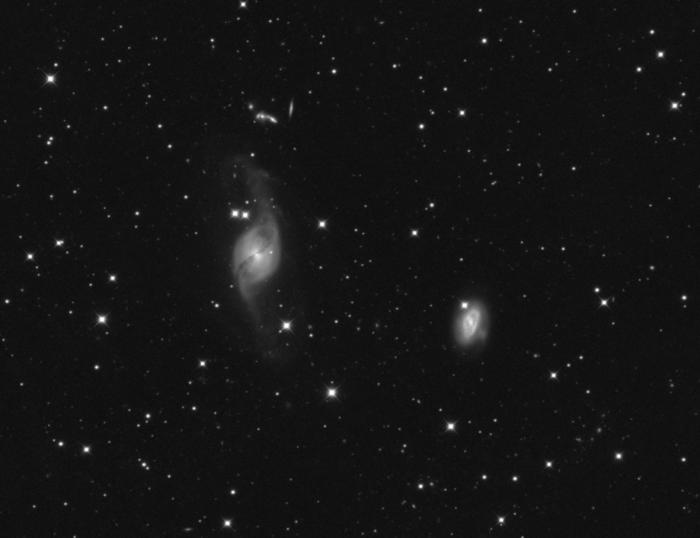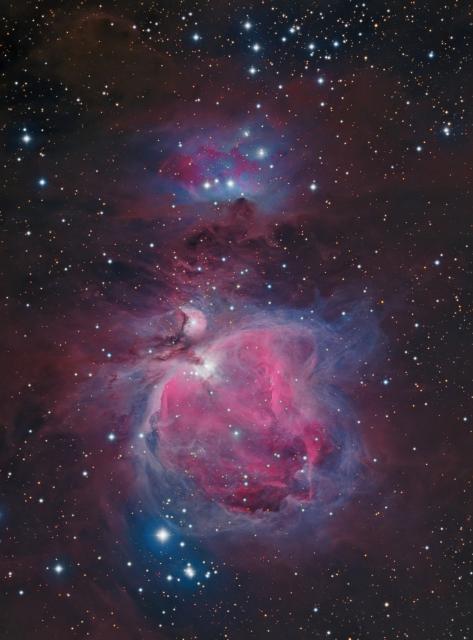-
Postów
2 804 -
Dołączył
-
Ostatnia wizyta
-
Wygrane w rankingu
36
Typ zawartości
Profile
Forum
Blogi
Wydarzenia
Galeria
Pliki
Sklep
Articles
Market
Community Map
Odpowiedzi opublikowane przez .zombi.
-
-
No a jak znajdujecie porównanie ? Mnie męczy to tło w CMOS'ach nie wiem czy to kwestia wyciągania czy one już tak mają.
-
Jaja sobie robisz chyba

Ale że w jakim sensie - zaznaczyłem w poście że spajki na potrzeby porównania - żeby grandy nie było

-
Nie
 spajaki dorobiłem na potrzeby porównania.
spajaki dorobiłem na potrzeby porównania. -
-
Zrobiłem jeszcze test wczoraj z obciętymi klatkami i nic to nie zmieniło - przychodzi mi jeszcze do głowy wielkość flatownicy - jeżeli nie doświetla prawidłowo brzegów to mogło by to dawać podobny efekt.
-
Q: What is overscan correction in the ASCOM driver?
A: When an image is taken using 0s exposure, it consists of 3 main parts, an overscan level (the mean level of all pixels - varies depending upon temperature and time), bias (the individual pixel-to-pixel variations) and read-out noise. Each CCD has an overscan region (which is an extra set of pixels down one or more 25 | P a g e sides) and give a measure of the average signal value that is introduced when the CCD image is read. This overscan level should be subtracted from your image. To do this, you can check the “Perform Overscan Correction” in the ASCOM dialog box and the driver will do this automatically. If applying overscan correction, you should also use a Pedestal value to ensure that no pixel value ends up as zero once the overscan correction has been done.
No to chyba należało by raczej włączyć overscan correction ?!
-
Faktycznie coś jest nie tak z tymi flatami - wyglądają normalnie poza ciemnym paskiem u góry - może to zaburzać normalizacje i dawać taki efekt - czy to jest jakiś nowy problem czy zawsze to miałeś ?
-
Biasa faktycznie ciężko zrobić źle ale wskazać programowi do stackowania prawidłowego jest już łatwiej zmaścić

-
Podobny efekt udało mi się ostatniu uzyskać używając nieprawidłowych biasów lub wcale ich nie używając - nie używając darków musisz używac prawidłowych bisaów
http://deepskystacker.free.fr/english/theory.htm
Flat-Field Frame CalibrationEach pixel in the CCD camera has a slightly different sensitivity to light. These sensitivity differences add another noise component to the image (known as flat-fielding error) unless steps are taken to compensate. While flat-fielding correction is important for achieving good quality images, it is absolutely essential for accurate photometric measurements.
With a bright background, any pixel-to-pixel variations in sensitivity are imprinted into the image; the more sensitive pixels show up as brighter dots. There are several common sources of flat-fielding variations. Typical CCD sensors have pixel-to-pixel variations on the order of 1%. Vignetting in the optical system can reduce the light flux at the corners of the sensor. Dust on optical surfaces near the sensor can cast shadows.
To create a flat-field frame, the optical system is illuminated by a uniform light source and an exposure is taken. To avoid non-linearity at the top and noise at the bottom, the exposure is usually chosen to get an average value of 30% to 50% of the saturation level. The flat-field is then renormalized by dividing each pixel into the average value in the array. Any pixel that is more sensitive will be assigned a number slightly below 1; any pixel that is less sensitive will be assigned a number slightly above 1. When this frame is multiplied by a raw image, it removes the sensitivity variations.
Flat-fielding must be done carefully. The entire aperture of the optical system must be evenly illuminated with light – if this is not done very carefully, then the flat-field will be wrong. Light leaks will ruin the calibration by adding unfocussed light that did not pass through the optical system. The flat-field pattern is different for each objective. Some sensors have significant flat-field variation as a function of wavelength (color). Changing the illumination levels usually affects the color temperature of the light source, requiring flat-fields and color balance adjustments to be repeated.
One simple approach for bright field microscopy is to remove the slide, and take images of the bright field. This is a good approach since the CCD sensor is illuminated in a fashion very similar to actual usage.
The flat-field frames themselves must be calibrated to remove bias, and for longer exposures dark correction must also be performed. It is essential that both the flat-field frames and light frames are properly bias corrected; otherwise the flat-field operation will not work correctly (mathematically, subtraction and division are not commutative). You can do this manually first, or just let MicroCCD do it automatically as part of the full calibration procedure.
-
 1
1
-
-
To już kolejne podejście widzę
 a poprzednie było już bardzo dobre. Cieszy mnie ten wątek bo też ostatnio strzeliłem ten obiekt i będzie z czym porównywać.
a poprzednie było już bardzo dobre. Cieszy mnie ten wątek bo też ostatnio strzeliłem ten obiekt i będzie z czym porównywać. -
albo coś było w powietrzu...
No powiedział bym nawet że całem masy powietrza na tej wysokości

-
 1
1
-
-
Dozbierasz materiału, czy obrobisz go inaczej albo to tutaj to tylko tak na smaczek ?
Wrócę do tego miejsca na niebie, dorobię lub zrobię materiał od nowa ten tutaj to tylko kilka klatek RGB zbierany przy fatalnym seeingu mieszany z Ha i OIII dla uzyskania jako takiego efektu

-
- Ta odpowiedź cieszy się zainteresowaniem.
- Ta odpowiedź cieszy się zainteresowaniem.
-
Temat do zamknięcia.
-
Genialna fota. Jedna z takich, na których nic specjalnego się nie dzieje, żaden bohater nie jest szczególnie wyróżniony, brakuje czegoś spektakularnego, a jednak - genialna, bo dopieszczona w szczegółach. Gwiazdki śliczne, ciemnotki śliczne. Chciałbym takie fotki robić. Gratulacje!
Dzięki Piotrze, chciałem aby fotka była na miarę zebranego materiału, bez wyciągania na siłę - gdyby było więcej materiału to "może" pojawił by się również efekt wow

-
Jak by się jeszcze Plejady złapały . . .
-
powtórzyłbym kalibrację koloru bo prawie wszystkie małe gwiazdki są pomarańczowe

moje doświadczenie z ciemnymi mgławicami mówi, że powinna być minimum godzinka na każdy kanał...
Kanału niebieskiego jest w stosunku do czerwonego 1.4 więc nie wiem co można by tu więcej zrobić - mi się wydaje że małe gwiazdki zanurzone w pyle tak mają zwłaszcza że jest tam sporo Ha - http://www.starpointing.com/ccd/ldn988.html?!
-
- Ta odpowiedź cieszy się zainteresowaniem.
- Ta odpowiedź cieszy się zainteresowaniem.
Długo zastanawiałem się jaki powinien być tytuł wątku i ostateczne padło na LBN 408 którą też widziałem opisaną jako Mały Irys.
W okolicy nałapało również sporo innych skatalogowanych obiektów:
LDN 981 984 988 982 978 971 987 991 985 1000LBN 412 409Sh2-120GN 21.00.7NGC 7031HH389(V 1331 Cyg)24x300s L, 3x8x300 RGB, FSQ106 f3,6, ST-8300Uwagi mile widziane
-
 25
25
-
No to może cirrus albo coś Ci zaparowało w torze optycznym.
-
Też wczoraj fociłem - i dawno tak złego seeingu nie widziałem:

-
Myślę, że samych zdjęć "archiwalnych" naszych astrofotografów starczy na co najmniej rok "papodów"

No to trzeba będzie opracować technikę zgłaszania co by się wszyscy w jednym miesiącu nie wypstrykali z najlepszych prac - no chyba że jedną pracę można zgłaszać wiele razy

-
Pomysł znamienity tylko czy rodzimi astro fotografowie są w stanie wyprodukować fotki zasługujące na wyróżnienie na każdy dzień roku ?!
-
Montaż, kamera, obiektyw?

Dane uzupełnione

-
 1
1
-
-
- Ta odpowiedź cieszy się zainteresowaniem.
- Ta odpowiedź cieszy się zainteresowaniem.
Wikipedia:IC 1613 (również PGC 3844 lub UGC 668) – nieregularna galaktyka karłowata znajdująca się w gwiazdozbiorze Wieloryba w odległości 2,4 miliona lat świetlnych od Ziemi. Została odkryta we wrześniu 1906 roku przez Maxa Wolfa[3]. Galaktyka ta należy do Lokalnej Grupy Galaktyk[3].Galaktyka IC 1613 zawiera bardzo mało kosmicznego pyłu. Znajduje się w niej wiele gwiazd zmiennych dwóch typów: cefeid oraz gwiazd typu RR Lyrae. Obie te cechy pozwoliły wyznaczyć odległość do galaktyki z bardzo dużą precyzją[4].Tym razem bez odszumiania Obiekt łapany między księżycem a latarnią. Zdjęcie jak ja to nazywam astronomiczno poznawcze
Obiekt łapany między księżycem a latarnią. Zdjęcie jak ja to nazywam astronomiczno poznawcze 
28x300s L, FSQ106 f3,6, STF-8300
-
 24
24







M106 ze Stężnicy
w Głęboki Kosmos (DS)
Opublikowano
Wydaje mi sie że ta galaktyczka nie jest aż tak daleko jak wsazywał by jej kolor na Twojej fotce